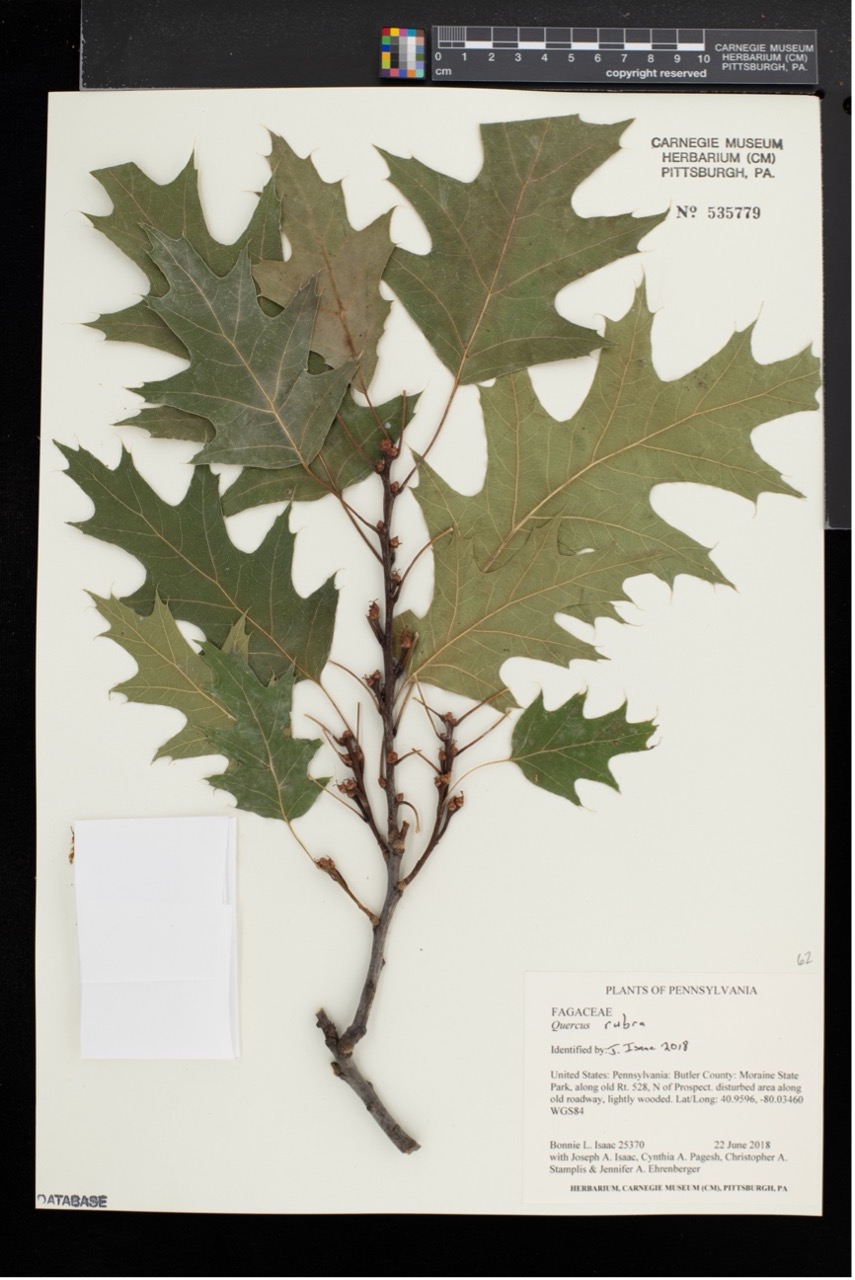Author: Elijah Cordrey
During my time with the department in the Spring 2022 semester, I received hands-on training in the collection process while assisting with a digitization project of plants from the Mid-Atlantic region. To fully appreciate the life and history of the collection, which is freely accessible on the museum’s website, one must know how to understand the wealth of information contained on a specimen sheet.
Beyond the physical plant, a specimen sheet includes an institution tag, collection number, information label, and occasionally a small packet for parts that have come loose in the collection process. Each of these aspects contribute to the greater story of the specimen both in its natural habitat and in the museum space.
Consider the included picture of a Red Oak specimen, located in the top righthand corner of the page is the institution tag. This label denotes the ownership of the given specimen, useful when a plant is on loan from another museum or herbarium for research or exhibition. Below this is the catalog number, a six-digit code corresponding to the order this specimen was entered into the Botany Department database. In other words, this Red Oak specimen is the 535,779th sheet processed in the collection, and there are well over 548,000 total plants currently housed at CMNH. In the digital catalog, this number is proceeded with the tag “CM” and allows department staff to search for and reference any cataloged specimen.
After the plant itself, the most important part of any sheet is the collection label, located in the bottom right corner. This label contains information on when, where, and by whom this plant was gathered, who identified the plant, and its scientific name. This information is used for research, geo-referencing the site of location, and storage within the department’s collection. In the example provided above, Red Oak, or Quercus rubra, belongs to the family Fagaceae. The handwritten number above the collection label, 62 in this case, corresponds to a cabinet or range of cabinets in the upper or lower herbarium at CMNH. Each plant family in the collection is given a number, and specimens are sorted accordingly into their matching cabinets, then further sorted alphabetically into files by genus and species. Within a cabinet, plants collected in Pennsylvania are kept in files separate from those collected in other states, countries, and continents, each color-coded for easy identification.
Location data, which is extremely detailed for the Oak specimen pictured here, varies widely throughout the collection as plants have been gathered for the herbarium since the 1800s. Recently acquired plants, such as this one, include the specific coordinates that tie the specimen to the environment in which it was found. Collection labels on the most recently gathered plants host QR codes linking to the iNaturalist page for the specific plant, a free app developed by the California Academy of Sciences and National Geographic which allows anyone to post photos of wildlife they encounter and crowd source observation data. Location details are crucial for researching subjects such as the ecological range of a species and their stage of life at the time of collection.
This position has taught me about the complexities and inner workings of the museum and collections work. The herbarium is more than just plants awaiting exhibition, it is a living collection – a library of botanical specimens ready for researchers of all kinds.


